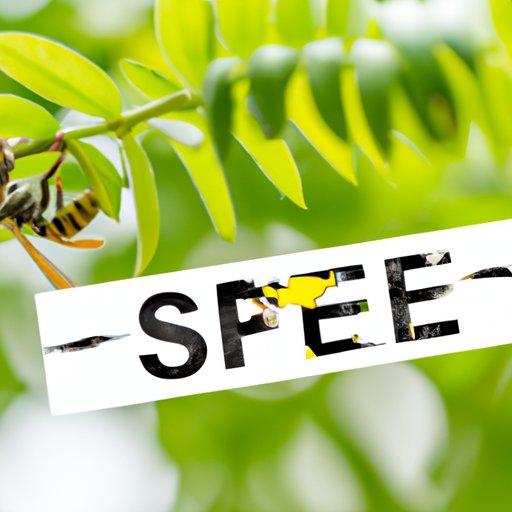
Introduction
If you’ve ever been stung by a wasp, you know how painful and uncomfortable it can be. A wasp sting occurs when a person is stung by the venomous stinger of a wasp. While most people only experience mild symptoms, it’s still important to treat wasp stings promptly. This article will guide you through the symptoms of a wasp sting, natural remedies to treat it, how to prevent it, precautions to prevent infections, and what to do if the sting is severe.
Symptoms of a Wasp Sting
The most common symptoms of a wasp sting include redness, swelling, and pain around the sting area. The area may also itch or feel warm to the touch. It’s important to note that wasp stings are different from bee stings. While both can be painful, wasp stings don’t leave the stinger behind and tend to hurt less than bee stings.
Natural Remedies for Treating Wasp Stings
If you’ve been stung by a wasp, there are several natural remedies that can help alleviate the pain and swelling. One of the most popular and effective ways of treating a wasp sting is by applying a paste made from baking soda and water to the affected area. Another option is using a cold compress made of crushed ice wrapped in a towel. Applying aloe vera gel, apple cider vinegar, or honey to the sting area can also help soothe the sting.
How to Prevent Wasp Stings
Prevention is always better than cure, and there are several precautions you can take to prevent wasp stings. Wasps are attracted to bright colors, so avoid wearing bright clothing and perfume when you’re outdoors. Hide any sweet food and drink while you are eating outside. If there are any wasp nests around your house, take steps to have them removed by professionals. If you see a wasp, avoid swatting it as this can provoke it to sting.
Precautions to Prevent Secondary Infections
While most people only experience mild symptoms after a wasp sting, it is important to take precautions to prevent secondary infections. Wash the affected area with soap and water to reduce the risk of infection. Keep the area clean and dry to prevent bacteria from entering the sting area. Avoid scratching the sting area, as this can introduce bacteria to the area and increase the risk of developing an infection.
Treating Severe Wasp Stings
If you experience severe symptoms after a wasp sting, it’s important to contact a medical professional as soon as possible. Severe symptoms can include difficulty breathing, a tightness in the chest, or swelling that extends beyond the sting area. You can also apply antihistamine creams to soothe the affected area and reduce the risk of complications. Essential oils such as tea tree or lavender oil can also be applied to the affected area as an alternative to antihistamine creams.
Conclusion
While wasp stings are common and often cause mild symptoms, it’s important to take them seriously. Natural remedies such as applying a paste made of baking soda and avoiding bright colors and perfume can help prevent stings. If you do get stung, take precautions to prevent secondary infections by washing and keeping the affected area clean. If the sting is severe, don’t hesitate to contact a medical professional.




